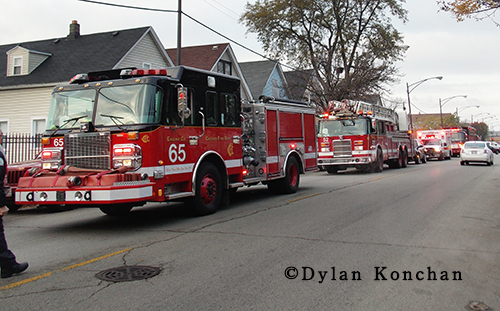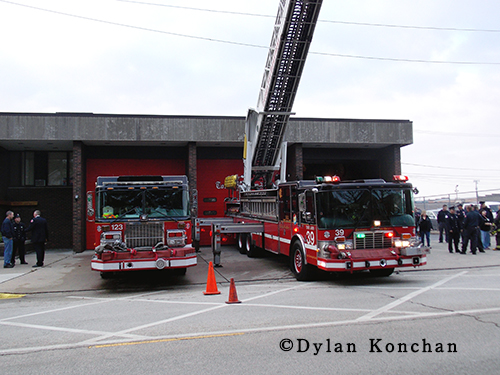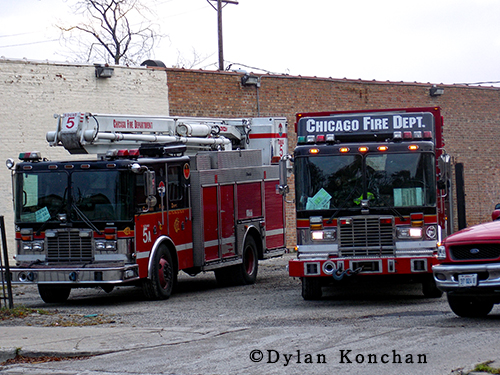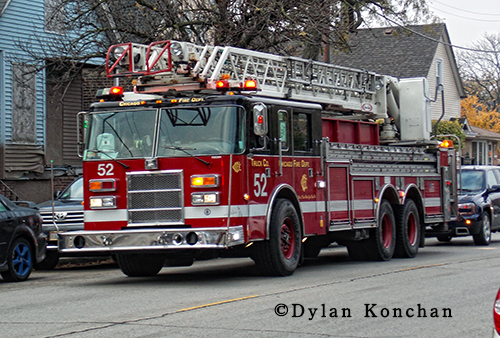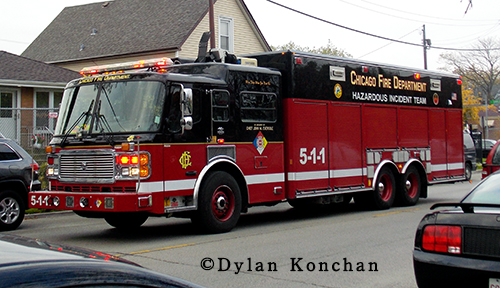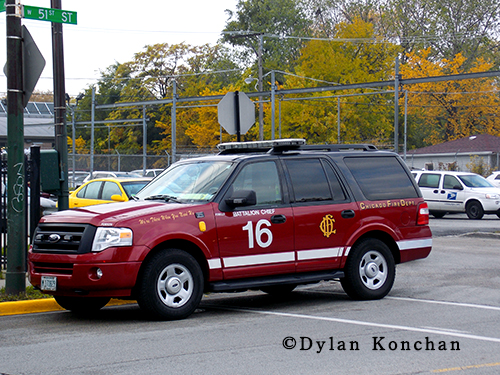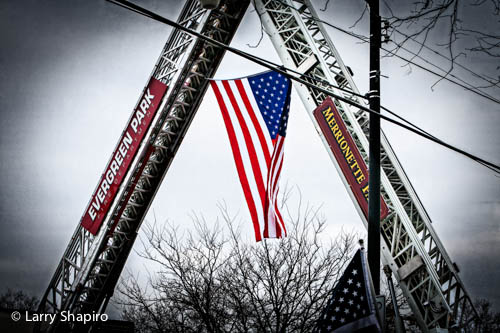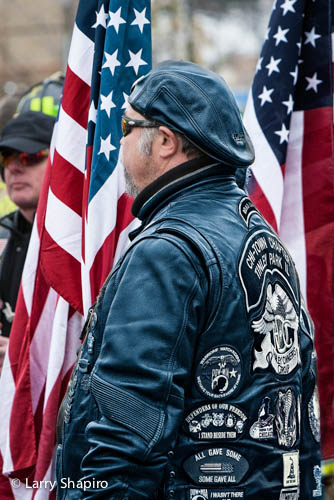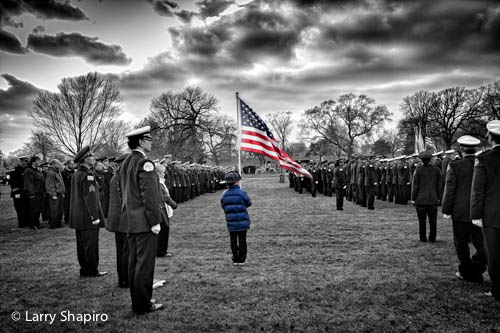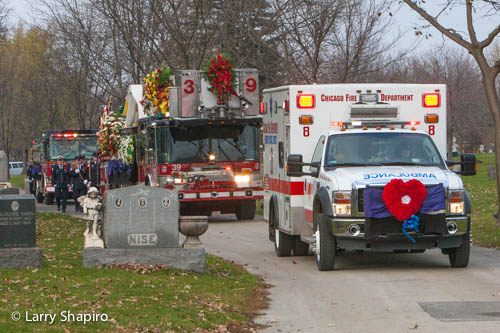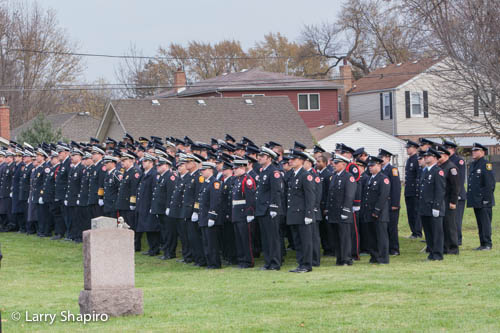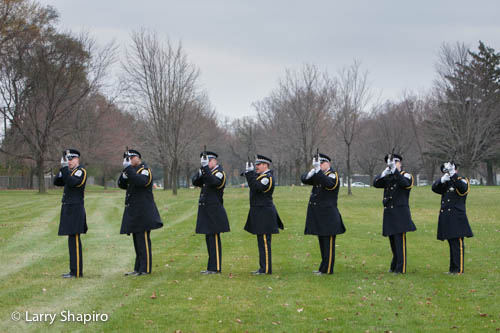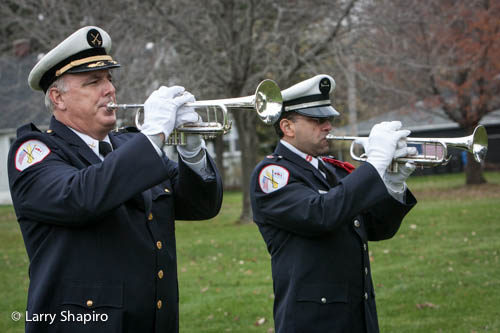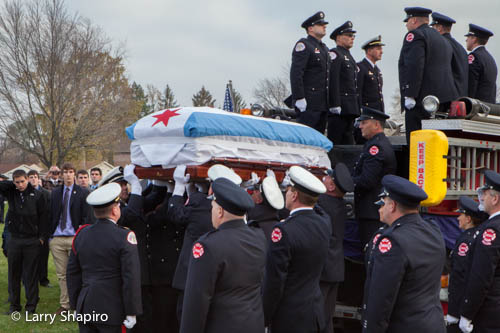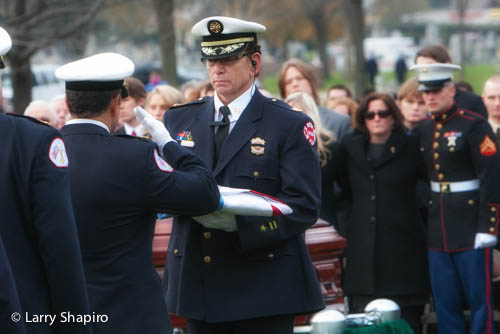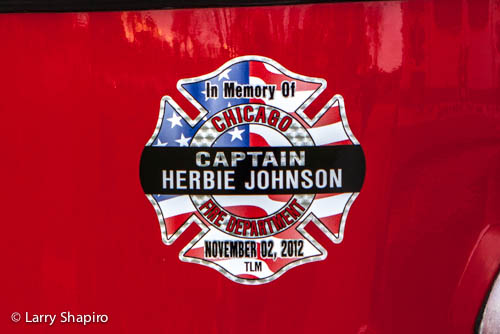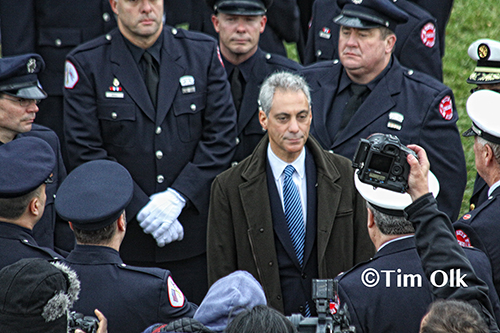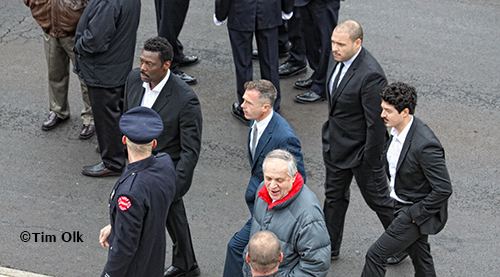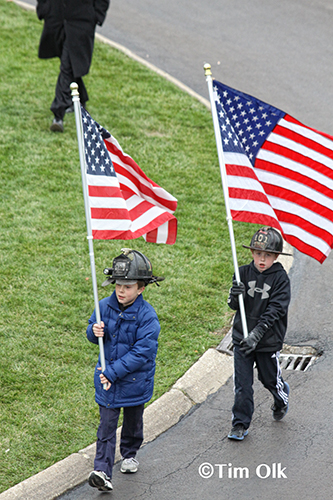The Chicago Tribune has an article about the NIOSH Report on the LODD of CFD Captain Herbie Johnson:
Chicago firefighters failed to properly coordinate and communicate their strategy for extinguishing a blaze that killed a 32-year veteran of the department last year, a federal investigation found.
The report marks the second time in as many years that the National Institute for Occupational Safety and Health has cited poor communications as a contributing factor in a Chicago firefighter’s death. Though not as scathing as the findings from a December 2010 blaze that killed two firefighters, the latest NIOSH report indicates there are still questions about how the department communicates while battling fires.
The report also describes the harrowing scene inside a burning Gage Park neighborhood two-flat on Nov. 2, 2012, where Capt. Herbert Johnson repeatedly ordered his men to safety after suffering severe burns to his hands, face and the inside of his mouth.
“He was trying to get us out but he couldn’t get himself out,” said firefighter-paramedic Mike Imparato, who yelled “mayday” — he had no radio — after Johnson fell to the floor.
Both the Fire Department and the firefighters union have reviewed the report, which does not specifically state which, if any, issues had a direct bearing on Johnson’s death. Instead it lists a series of “contributing factors” that include poor communication, staffing shortages and inefficient coordination at the scene.
A union official said the report, while an important learning tool, also shows that fires are filled with hidden dangers beyond anyone’s control.
“They got on the scene and there was minimal fire showing from the first hole in the roof,” said Thomas Ryan, president of Chicago Fire Fighters Union Local 2. “It looked as though they had it under control, then all hell broke loose. Johnson’s first instinct was to tell the members to get out. He looked out for the safety of his fellow firefighters. Unfortunately he didn’t make it out.”
Johnson, who had been promoted to captain that summer, was in the house for only six minutes when things went terribly wrong, according to investigators. As Johnson carried a hose inside, the scene commander announced over department radios that other firefighters were ventilating the building and blasting water into the attic.
Johnson, who was carrying a radio, never confirmed that he got that message. But the plan proceeded anyway. The report specifically chastises scene commanders for failing to confirm that Johnson knew the plan to attack the fire.
“Everyone has to know the strategy that is being implemented and understand their role by acknowledging via radio their position and role,” the report states.
The federal investigators also took issue with the strategy employed that day, saying that firefighters on the scene failed to consider that horizontal ventilation — doors were opened on either end of the building, and there was a hole in the roof — would cause the fire and heat to intensify and become dangerous, federal investigators said.
Around the same time as the ventilation plan was enacted, Johnson ordered firefighters on the second floor to get out of the building. His order was followed by a loud noise, as Johnson collapsed on the second floor.
The report confirms that the firefighter-paramedic who found Johnson did not have a radio and was reduced to screaming “mayday” to call attention to Johnson’s injuries, according to federal investigators. The report notes that on the day of the fire the city was still awaiting a shipment that would have provided a radio to every member of the department.
Those additional radios were recommended by NIOSH after an investigation into a December 2010 fire in a vacant South Side building that killed two firefighters. The lack of radios was cited as a contributing factor in that blaze.
Chicago Fire Department spokesman Larry Langford on Monday initially insisted that all firefighters involved in the Gage Park fire had radios. After reading the report Monday, he conceded that some firefighters at the scene did not have radios but said it would have made little difference.
“That had nothing to do with this incident,” Langford said. “Communication was not the issue in this incident from what I determined.”
Every Chicago firefighter now has a digital radio, Langford said. Most were distributed on Nov. 18, 2012, about two weeks after Johnson’s death.
Imparato, who made the mayday call without a radio, told the Tribune he yelled for about 10 seconds before help arrived. He tried to grab Johnson’s radio to call for assistance but couldn’t reach it, he said.
“Ten seconds seemed like an eternity,” he said. “I could hear footsteps on the stairs, so I knew others were coming. I was screaming ‘mayday’ the entire time.”
Imparato said he doesn’t believe a radio would have changed Johnson’s fate.




